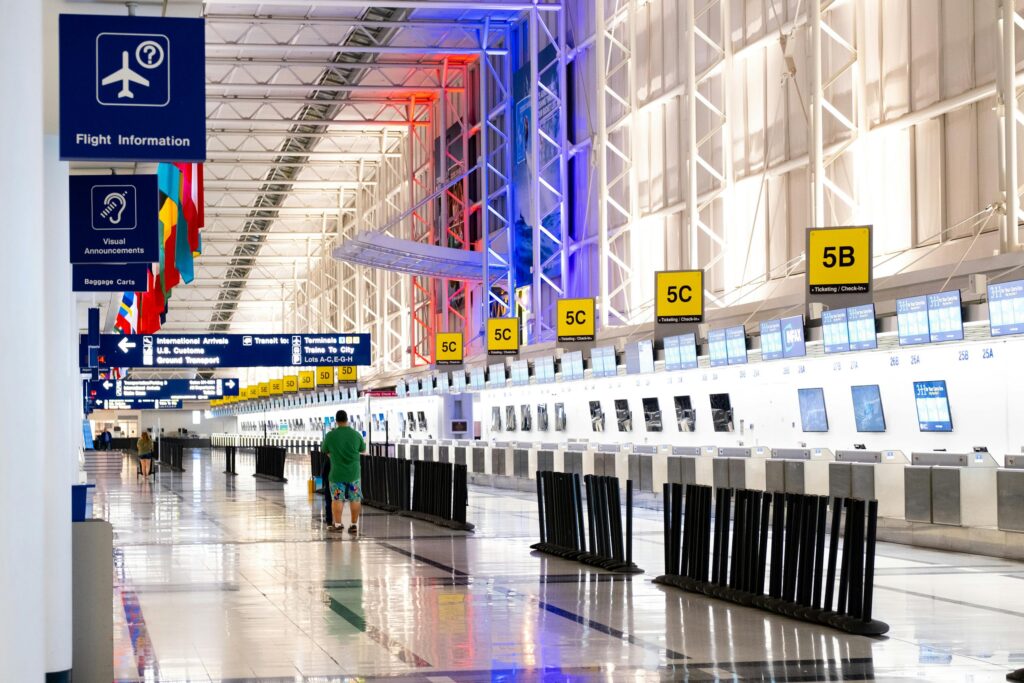Imagine this: You’ve landed at the airport, excited for a new adventure, only to find that an unexpected twist in world events has left you stuck. Suddenly, you’re living a bit of a real-life version of The Terminal, where Tom Hanks’ character, Viktor Navorski, arrives in the United States only to discover that his homeland has vanished from the map, leaving him stateless. Unable to enter America and with nowhere else to go, he’s forced to make JFK Airport his temporary home…
While your travel plans might not come with such a dramatic turn, the unexpected can still find its way into even the most carefully planned trips. Preparing for every scenario—big or small—can make all the difference between a smooth journey and being refused entry.
International travel can be exciting, but understanding visa and entry requirements is essential to avoid unexpected delays or issues at the border. This guide breaks down everything you need to know about entry regulations, from passport validity to navigating visa applications, so you can feel fully prepared and focus on enjoying your trip.
1. Check Visa Requirements and Application Processes Early
Visa requirements vary widely by country, and applying for one can take anywhere from a few days to several months:
- Determine if a Visa is Needed: Start by checking if your destination requires a visa or if you qualify for visa-free entry. Some countries offer e-visas (online applications), while others may require you to apply at an embassy or consulate. Use trusted sources like Travel.State.Gov or the official government website of your destination.
- Know the Application Process: If a visa is required, check the process specifics, including fees, documents needed, and processing times. Keep in mind that some destinations require proof of onward travel or a booked return ticket to grant entry.
2. Ensure Your Passport is Valid for International Travel
One of the most common reasons travelers are turned away is due to passport validity issues:
- Six-Month Validity Rule: Many countries require that your passport be valid for at least six months beyond your planned departure date. Double-check the expiration date, and if it’s approaching the limit, renew your passport early to avoid last-minute issues.
- Blank Pages Requirement: Some countries also require a certain number of blank pages in your passport. A good rule of thumb is to have at least two blank pages available when you travel internationally.
3. Understand Entry Requirements Beyond Visas
In addition to visas, some countries have other entry prerequisites that may impact your travel plans:
- Onward Travel Proof: Many destinations require proof of onward or return travel. Have a printed or digital copy of your flight itinerary or hotel bookings to show if requested.
- Proof of Funds: Some countries may also ask for proof of sufficient funds for your stay. This can include bank statements, credit cards, or traveler’s checks. (This is typically for longer, non-tourist stays.)
4. Get Up-to-Date on Health Requirements and Vaccinations
Health regulations vary depending on the destination, and some countries require specific vaccinations before you arrive:
- Other Health Precautions: Some countries may also require certificates for recent COVID-19 testing, malaria prophylaxis, or other health considerations. Check your destination’s official health website or consult a travel health clinic to ensure you’re fully prepared.
- Routine and Required Vaccinations: Many countries will have required vaccinations, like yellow fever for certain regions in Africa and South America, or recommended ones, like Hepatitis A or typhoid for destinations where food and waterborne diseases are common. For U.S. travelers, the CDC Traveler’s Health page has an excellent breakdown of required vaccinations by country.
5. Review Travel Advisories and Local Entry Conditions
Entry rules can change quickly due to political or health concerns, so staying informed is key:
- Government Travel Advisories: Many governments provide current travel advisories that detail the latest entry requirements, restrictions, and safety information. For example, U.S. travelers can use Travel.State.Gov’s advisories to get country-specific guidance.
- Local Government Resources: Closer to your departure date, check the local embassy or consulate website for any last-minute updates or travel alerts relevant to your trip.
- Local News Sources: It’s often helpful to check recent local news in your destination to get a sense of the current atmosphere, from weather warnings to cultural events. Just before your trip, it’s worth doing a quick search to ensure you’re aware of any recent developments that may impact your travels.
6. Consider Comprehensive Travel Protection
Travel protection policies are a must-have for international trips, providing protection for both health emergencies and unexpected changes to your plans:
- Medical and Evacuation Coverage: Look for policies that cover medical expenses abroad and, if possible, include emergency evacuation. Medical care costs can vary drastically depending on the country, so travel insurance can offer valuable peace of mind.
- Trip Cancellation and Interruption: Coverage for cancellations, delays, and interruptions can help if you’re forced to adjust your travel plans for a covered reason, detailed in your policy documents. (“Cancel for Any Reason” is different, and is frequently an “add-on”/”upgrade” to your travel protection policy.)
- Provider Recommendations: Styled Getaways can offer a shortlist of our preferred travel insurance providers, if you need help finding coverage that’s tailored to your trip.
Final Preparations
Once you’ve handled visas, confirmed your passport’s validity, and checked for any specific entry requirements, you’re all set to embark on your journey. Need help navigating these details? Styled Getaways is here to streamline the entire process, ensuring your travel plans are seamless and worry-free. Safe travels!
Disclaimer: This article references scenes and themes from The Terminal for illustrative purposes. The content provided is for general information only and should not be taken as legal advice. For official travel requirements and visa information, please consult the embassy or consulate of your destination country or visit official government websites.







